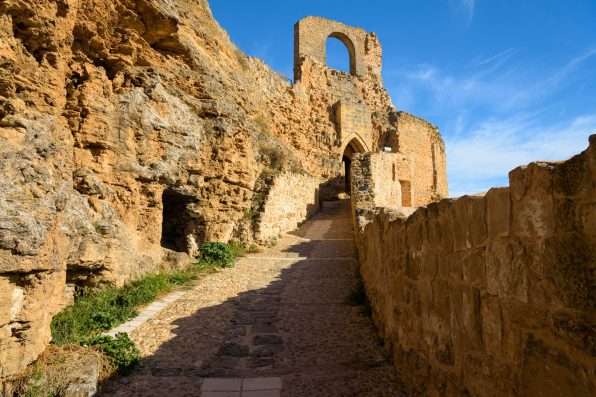A Study Of Medieval Warrior Monks Buried At A Spanish Castle Showed They Were Part Of High Society Before Dying In Battle

After studying some medieval human remains from a castle in Spain, researchers now know more about a group of warrior monks who lived a long time ago.
The remains were buried in a cemetery at a castle in Zorita de los Canes, a municipality that is located in the center of Spain.
Members of a Christian military and religious institution known as the Order of Calatrava were laid to rest in the cemetery.
The Order of Calatrava was established in 1158 when King Sancho III of Castile ceded the fortress of Calatrava to the abbot of the Cistercian monastery.
The order of knights and monks defended the fortress against the Moors. In 1164, they were formally recognized by the pope.
By the time the Order was dissolved in the 19th century, it had become nothing more than an honorary association of Spanish nobles.
The researchers analyzed the remains of 25 individuals who were buried between the 12th and 15th centuries.
They were able to determine what the diets and lifestyles of the deceased were, as well as the causes of their deaths.
According to Patxi Pérez-Ramallo, a co-author of the study and an archaeologist at the Max Planck Institute of Geoanthropology in Germany, the individuals died in battle.

JMDuran Photography – stock.adobe.com – illustrative purposes only
Additionally, 23 of the bodies had marks on their bones that indicated they died violent deaths. The marks were mostly from puncture wounds and blunt force injuries on parts of the body that were not protected by armor, such as the cheeks, the upper portion of the skull, and the inner part of the pelvis.
Based on the available evidence, experts believe that the remains belong to the warrior monks of the Order of Calatrava. It is the first time that warrior monks have been identified so clearly.
The researchers also performed an isotope analysis on the bones to learn more about the monks’ diet and, in turn, each of their hierarchal status within the Order.
The hierarchy was made up of leaders who were of high nobility, knights who were figures of low nobility and the urban elite, and the peasants.
The results of the analysis showed that their diet was rich in fish and poultry, which was common for medieval high society.
Around the castle, animal remains were also unearthed and studied. They matched the results of the isotopic analysis of the human remains that determined their diets.
In the end, the researchers concluded that the Order mainly consisted of the lower nobility and the urban elite.
“It was fascinating to see that, although the archaeology provided no direct evidence of their identities, our study helped to identify them and, like pieces of a jigsaw puzzle—our results fit with historical sources describing the order and its function,” Pérez-Ramallo said.
Sign up for Chip Chick’s newsletter and get stories like this delivered to your inbox.
More About:News